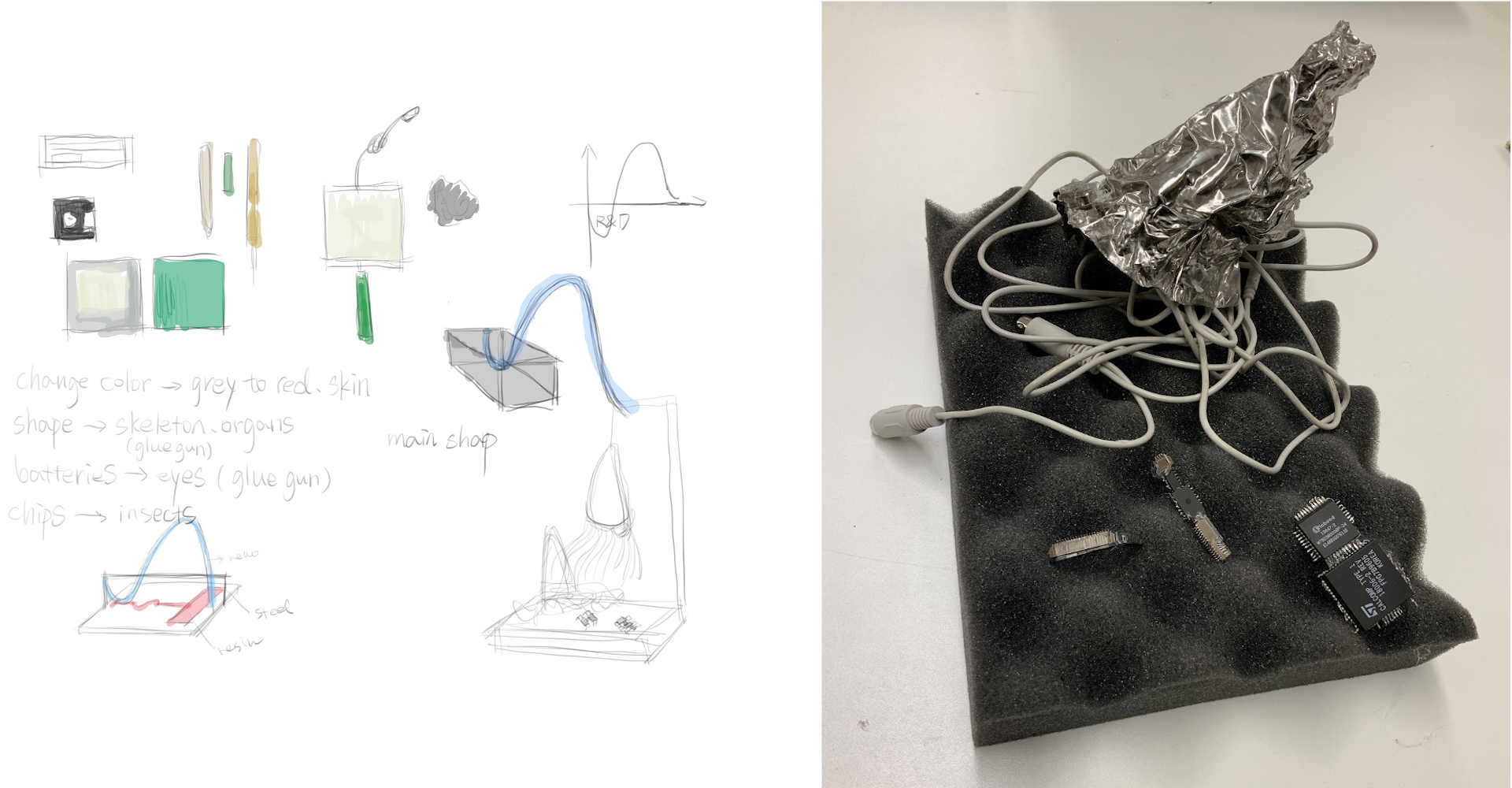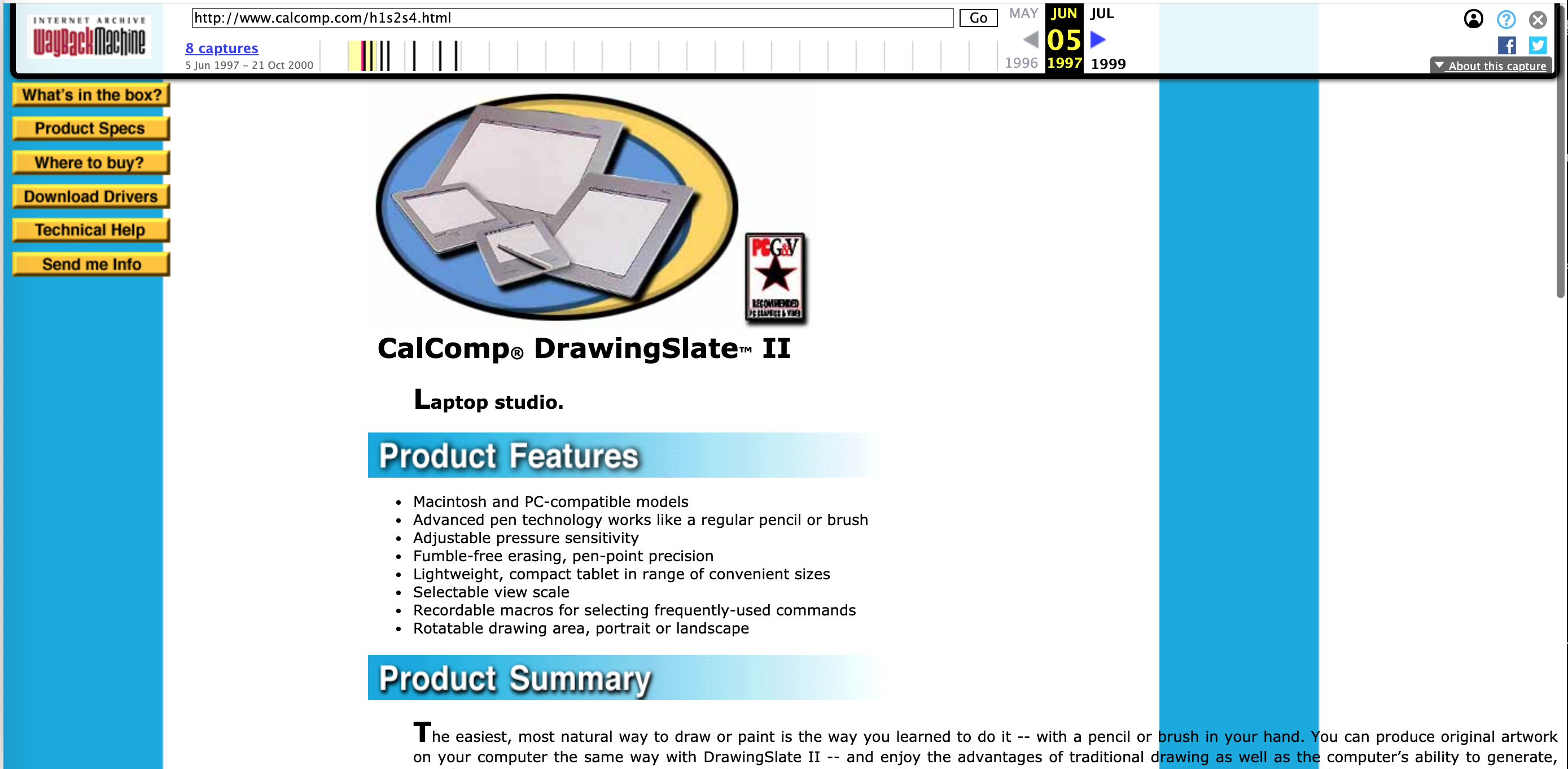Lifecycles of Tech
By: Felix Loftus, Jingyi Chen, Jakob Jennerholm Hammar
Our central concern was with lifecycles of consumer technology. This was inspired by a multitude of concerns around disposability. From our own personal experience of attraction to shiny new things from the ‘cutting-edge’, software obsolescence throughout our lifetime, to the mounting socio-material impact that disposability has on earth and its inhabitants.
We approached this theme by examining a singular object; breaking it apart, exploring its materiality, and then researching into its life. Our object was the CalComp DrawingSlate II from 1995, a drawing tablet intended for use in digital arts, found in a local charity shop.
From its software, to its hardware and its intended purpose we attempted to discover all we could from our positions as consumers and digital researchers. Much of the information could not be found by us. Much has been obscured.
To express the lifecycles of this object in a way that would stimulate reflection on disposability we constructed a speculative narrative alongside props from the narrative.
In the story our object is in a future wasteland where ‘de-cycled’ tech lives. The object is brought to consciousness and gives itself a new form, and forms an existential longing to understand itself.
With the help of other creatures it travels on a knowledge-quest in an attempt to satisfy this longing. Through fragments of information it forms an idea of its personal history in the form of a digital archive. Images juxtapose to reveal inconsistencies in the information it finds.
Is its longing satisfied?
Can it now holistically understand itself?
Is it confused or sad about its existence?
The props or artifacts created were sketches of its possible material form, made from its internal components, and a representation of the object’s personal archive composed of the information collated on the journey and communicated through the a simulation of the very same software it was once interacted with.
Our project fuses four key ideas.
The first was a response to the problem of the scale of the process we examined.
How could we research something so complex? How could we avoid skimming on top of abundance of information surrounding disposability?
Our response was to follow the materialist social critique of Benjamin and, amongst others Adorno, which sees a commodity as a “condensation of social forces.” (Steyerl, 2006)
As our object had both software and hardware we had to consider the digital aspect of our object. So, we stretched Benjamin’s theory onto digital fragments with the help of Haraway’s feminist technoscience: specifically her view of technology as materialised figurations that imply certain ways of associating humans and machines. (Harraway, 1985) This helped reveal how a digital drawing process implicates the user in a wider system…
Following this, our research was object oriented and included research into the software of the object.
The second idea was Tretyakov’s method of Factographic writing which situates objects as the protagonist of stories to reveal human relations. (Tretyakov , 1929)
Finally, we used a speculative approach. Our story and object tells of an alternative world and is following Grosz thoughts of the new or the future as “unpredictable, disordered or uncontainable change, which lurks within the very concept of change or newness” (Grosz, 1998, p.37), we think of the future not in a predictive or utopian sense but as a tool to inspire thoughts and ideas. Like Dunne and & Raby’s view, referencing Kendal Walton, that "[fictional objects] facilitate imagining and help us entertain ideas about everyday life that might not be obvious", futures are then “...not a destination or something to be strived for but a medium to aid imaginative thought - to speculate with”.
The fragments we discovered traced images of capitalist modes of production, colonial legacies, software obsolescence, a £199.99 adaptor, scarred landscapes, and ancient drawing methods. For us, a codepedence of the ‘cutting-edge’ and socio-material devastation emerged.
Further thoughts and discussions to be heard in the following podcast.
The personal archive of the Drawing Slate II can be found at
https://drawingslate2.github.io/archive/
References
Dunne, Anthony, and Fiona Raby. Speculative Everything: Design, Fiction, and Social Dreaming. Cambridge, Massachusetts ; London: The MIT Press, 2013.
Grosz, E. A. “Thinking the New: Of Futures Yet Unthought.” Symploke 6, no. 1 (1998): 38–55. https://doi.org/10.1353/sym.2005.0074.
Harraway, Donna. "Manifesto for Cyborgs: Science, Technology, and Socialist Feminism in the 1980s", Socialist Review, 80 (1985) 65–108.
Steyerl, Hito. “The Language of Things,” European Institute for Progressive Cultural Policies, (2006), 2-5.
https://transversal.at/transversal/0606/steyerl/en
Tretyakov, Sergei . “The Biography of an Object”, 1929
Podcast References
Donkey Kong Country 2 - Bayou Boogie {8 FDD, 4 SM, 1 DT} https://www.youtube.com/watch?v=Mo6XAjlQV2E
https://freesound.org/people/AugustSandberg/sounds/271529/




































































